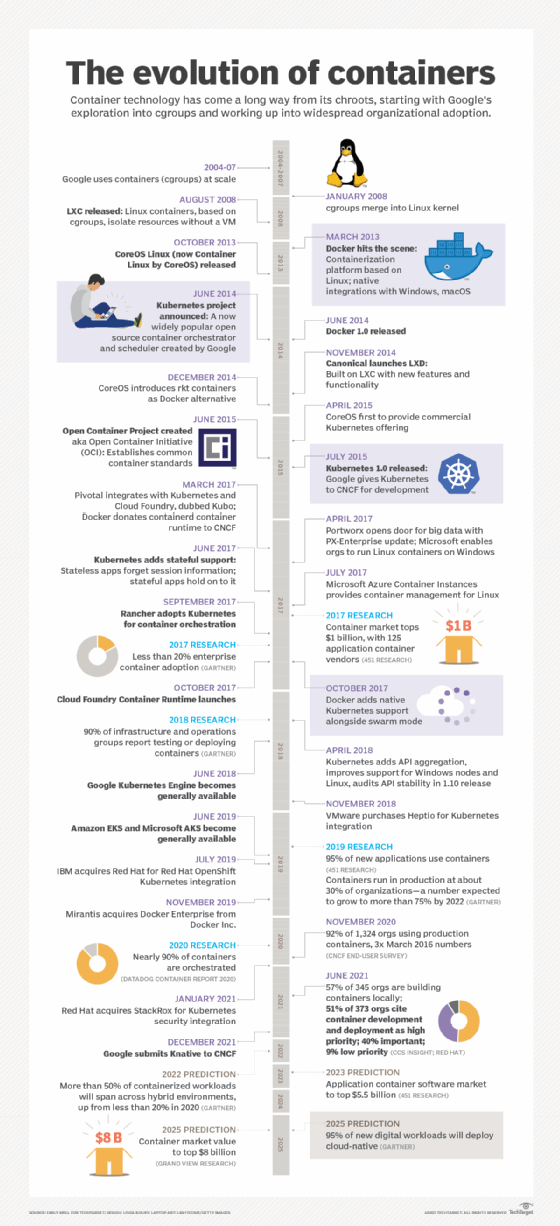
Brian Jackson - Fotolia
What are the pros and cons of deploying containers?
Containers can reduce a company's OS licensing costs and required CPU usage, while acting as a bridge to serverless computing. But IT teams need to evaluate the potential drawbacks.
IT teams are thinking of container technology as an alternative to traditional virtual server technologies. Before organizations consider deploying containers, however, it's important for them to consider the pros and cons.
With virtual servers, every application gets its own virtualized operating system. While effective, running all of these operating systems in individual virtual machines creates storage and CPU overhead. This translates into high licensing and operating costs in both private and public clouds.
The pros of deploying containers
Containers, on the other hand, allow IT staff to run multiple applications on a single OS. Each application is segmented logically within the OS in its own container.
As a result, the apps can maintain their own policies independent of any other container. This architecture can significantly decrease OS licensing costs, as well as lower the amount of CPU and storage required to run multiple server operating systems.
The cons of deploying containers
Deploying container technologies has potential drawbacks, however. First, fewer IT administrators have container experience. This is especially true when compared with the number of administrators with hypervisor skills.

When deploying containers, IT teams need skills in container management platforms, like Docker, CoreOS and Kubernetes. These platforms contain a wide variety of tools to design, deploy and manage applications running within containers. The general tasks for containers compared to hypervisors are largely the same, with the exception that containers deal with fewer operating systems. Thus, the focus is more on the application and cluster platform, as opposed to the OS.
Another potential challenge is many enterprise organizations are opting to leapfrog container platforms in favor of serverless computing. Serverless computing is still relatively new, and many IT leadership circles consider it to be experimental. But it has the promise of further reducing administrative overhead and cloud computing costs.
Whether a company chooses to go serverless depends on the types of applications it is developing, as many apps must be rewritten from scratch to become serverless. Much like the transition from bare-metal servers to virtual machines -- or from locally hosted applications to cloud-hosted -- migrating to serverless will be a slow process. Containers will fill that gap, and most companies will opt to deploy containers instead.






